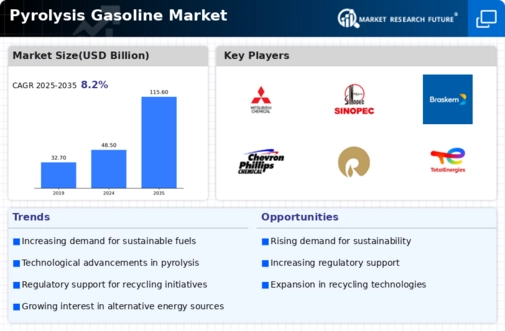Pyrolysis Gasoline Market Summary
The global pyrolysis gasoline market is projected to grow significantly from 48.49 USD billion in 2024 to 115.63 USD billion by 2035, reflecting a robust CAGR of 8.22%.
Key Market Trends & Highlights
Pyrolysis Gasoline Key Trends and Highlights
- The market valuation is expected to increase from 48.5 USD billion in 2024 to 115.6 USD billion by 2035.
- A compound annual growth rate (CAGR) of 8.22% is anticipated from 2025 to 2035.
- The growth trajectory suggests a rising demand for pyrolysis gasoline in various applications.
- Growing adoption of renewable energy technologies due to environmental regulations is a major market driver.
Market Size & Forecast
| 2024 Market Size | 48.49 (USD Billion) |
| 2035 Market Size | 115.63 (USD Billion) |
| CAGR (2025-2035) | 8.22% |
Major Players
Mitsubishi Chemical, Sinopec, Braskem, Chevron Phillips Chemical, Reliance Industries, BPLyondellBasell, DOW, TotalEnergies, China National Chemical Corporation, Formosa Petrochemical, Shell, Aramco, Hengli Petrochemical, ExxonMobil






















Leave a Comment